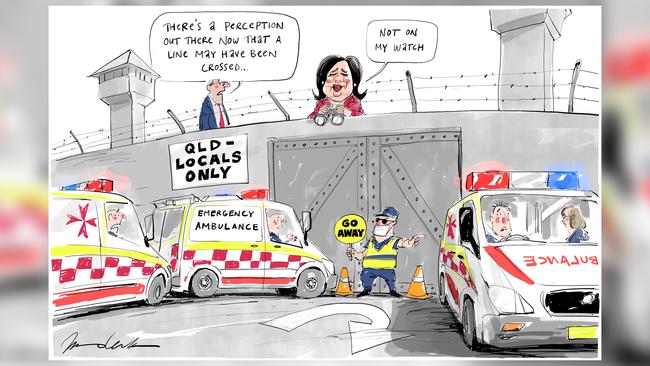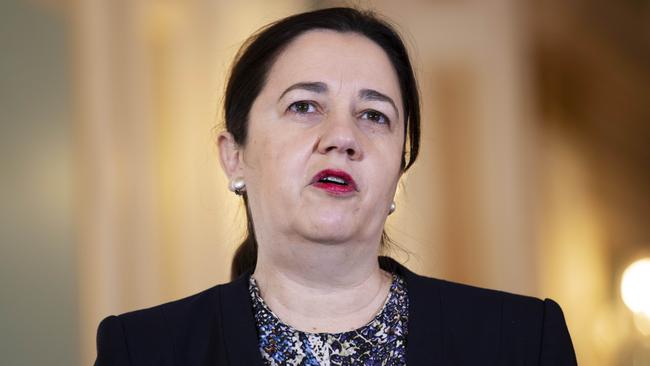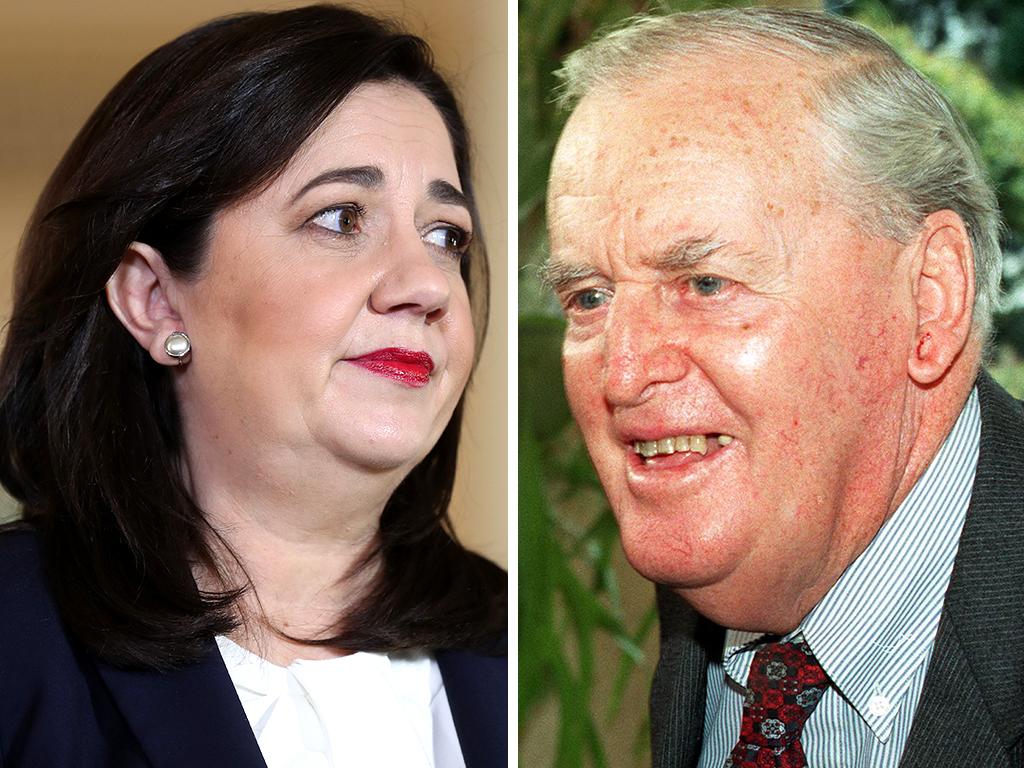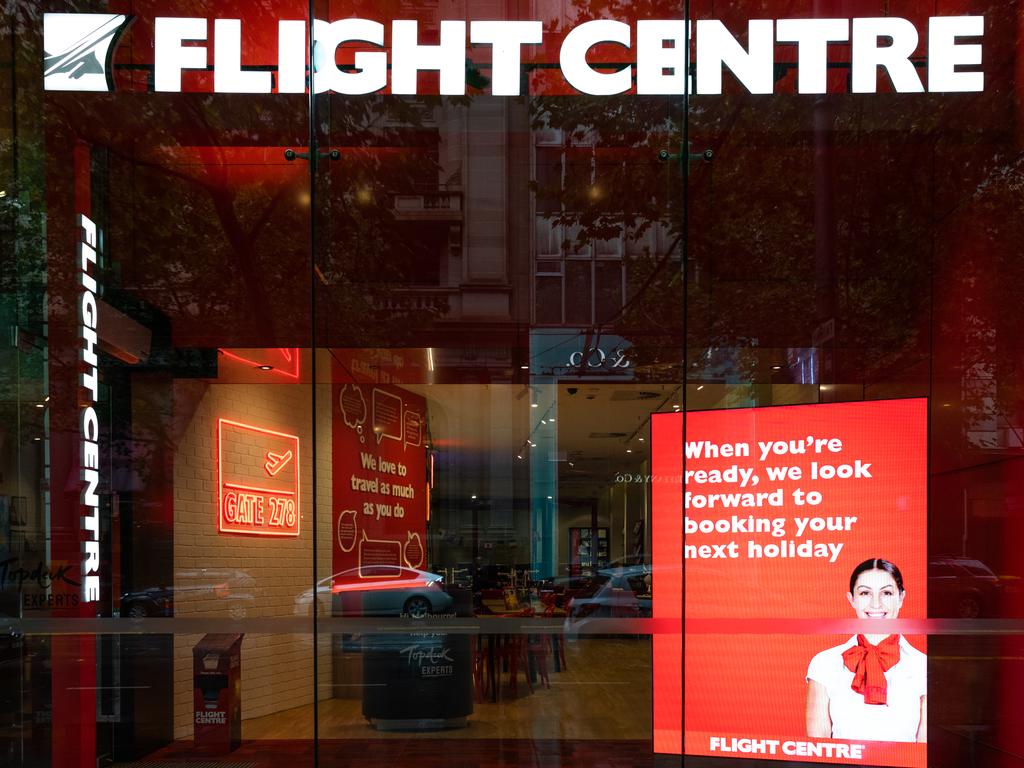
In the UK — which is still reporting about 1000 COVID-19 cases a day — travellers are free to holiday on the continent. They must self-quarantine for a fortnight after returning to Britain. EU borders are open but most Australians can’t travel interstate, let alone to Europe.
This newspaper’s Paul Kelly wrote scathingly last Wednesday about the new “pandemic protectionism” of premiers and chief ministers who are reaping enormous polling rewards for their business-destroying pandemic strategies.
Kelly flagged the potential political problem as early as March 7: “The coronavirus outbreak will become a decisive test of … how much … hostility towards authority and the culture of individualistic self-interest have damaged Australia’s capacity to respond … (to an) emergency.”
Neither Kelly nor the federal government foresaw the possibility state leaders would become the chief destroyers of the national political culture. Nor that the media would be a willing ally helping premiers overhype the virus by reporting each case as if it were a national catastrophe.
This column reported in April that a bad national influenza season could kill up to 3000 Australians. Yet we don’t see daily media conferences by premiers reporting overnight influenza diagnoses.
Reporters have also hyped stories of potential longer-term organ damage to COVID-19 sufferers, apparently unaware the influenza virus can damage the heart muscle. It’s called myocarditis and can even kill children.
Australia looked to be on top of the coronavirus by early June. Then Victoria allowed politically correct concerns about workforce diversity to destroy its own hotel quarantine arrangements. It quickly stopped allowing the return of overseas travellers while Queensland and Western Australia, with only a handful of cases, reduced their intake to 500 and 525 respectively a week. NSW continues to accept 450 a day and to accommodate each of them in Sydney hotels, many on behalf of the less populous states.

As of last Thursday, Australia has had 25,205 COVID-19 cases since February, 20,095 of whom have recovered. There have been 549 deaths in the past six months, 462 of them in Victoria. The lockdown states of WA, South Australia and Queensland recorded nine, four and six deaths respectively. NSW has had 52 deaths from COVID-19 up until last Thursday, and has recorded about 1000 active cases, most in southwestern Sydney. There is logic in banning travel out of Victoria until its stage 4 restrictions have repressed the virus, and from southwestern Sydney to rural NSW and interstate.
But all NSW residents are banned from interstate travel, even though there have been no cases in the state north of Port Stephens in the past month.
Effectively, southeast Queensland residents who are not barred from entering NSW but where there are active cases are a much greater risk to NSW than NSW residents north of about Newcastle are to Queensland.
Yet in the UK and Europe, borders are open even though total deaths in the UK, Italy Spain, and France are between 50 and 100 times the total number of deaths in Australia. Part of the reason Europeans are prepared to travel and risk infection is the widespread evidence, scarcely reported here, that death rates from COVID-19 are falling. The likely reasons are available on the Oxford University Centre for Evidence Based Medicine website.
The US, with 330 million people, has lost 183,492 to COVID-19 and remains closed to foreign travellers. It is largely open to interstate travel within the US, though with strict quarantine and testing rules.
To put the Australian pandemic experience into historical perspective, we lost 60,000 soldiers from a population of less than five million in World War I. Shortly after, Australia lost 12,000 to Spanish flu in 1919-20. The states control health within their borders and, until any High Court challenge, seem to have the right to close their interstate borders for health reasons. Yet the national cabinet and the Australian health principal protection committee have not recommended interstate border closures. They did, however, stop international flights from China and declare a pandemic before the World Health Organisation did so. Those decisions served the country well, limiting early spread of the virus.
Yet the success of the federal response has had a perverse negative effect in shielding states from financial responsibility for their own border closures. The federal government’s $300bn of spending to protect jobs and keep the economy moving has kept state-based tourism businesses alive, largely without tourists.
At a time when the economy has shrunk by three per cent and real unemployment could be more than 10 per cent, the overnight loss of the $45bn inbound tourism industry is not insignificant. It has caused the collapse of Virgin Airlines and forced Qantas to lay off 8500 workers and stand down 20,000 more as its losses balloon to $2bn.
Yet the premiers and chief ministers could offset that, even if international travel remains blocked. A study by McKinsey released on August 9 shows national border closures cost the country $40bn a year in lost revenue from inbound travellers; outbound travellers, meanwhile, actually spend $45bn overseas. McKinsey argues “if Australians were to redirect their international spending … to domestic holidays, the industry could be buffered”.
One of Queensland’s favourite sons, Graham “Skroo” Turner, built Flight Centre into a multi-billion-dollar business, which last week reported a loss of $849m. He has written logically about problems with government strategies to deal with the pandemic.
Writing here on July 13, Turner specifically rejected the idea Australia could adopt Sweden’s herd immunity strategy but called for clarity by state and federal governments about whether the national strategy was suppression or elimination. He said Australia needed “community buy-in” to live with the virus while waiting for a vaccine but governments could not keep shutting down business every time there was an outbreak.
This paper’s Rosie Lewis wrote last Thursday about a plan being worked on by the Australian Chamber of Commerce and Industry and federal bureaucrats that would scrap state border closures and impose only “targeted and time-restricted local lockdowns on areas of community transmission of coronavirus where the source is unknown”.
Sounds pretty logical in a country with an open economy and a large tourism sector. Prime Minister Scott Morrison should make states that do not go along with any such plan pay for their own JobKeeper arrangements in the tourism sector so the tier of government responsible for a decision pays for that decision.








While Australian journalists focus on stories of families separated from loved ones by state border closures and citizens overseas struggling to find flights home, there has been little media recognition that Europe is open for tourism.